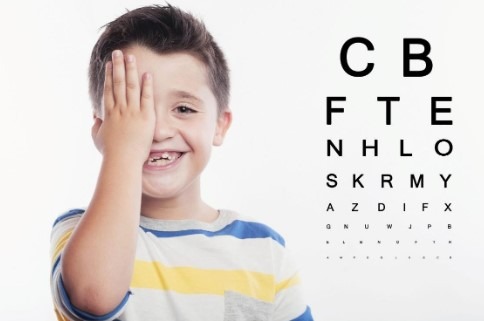Over 12 million people are visually impaired in the U.S. over the age of 40. That’s why it’s more important than ever that children visit the optometrist to ensure their eyes are healthy before they become adults.
By understanding potential eye impairments, parents of children with poor eyesight can address it with glasses, contacts, or surgery.
That’s why it’s important to have eye exams from as young as 6-months old. It’s important to know when to schedule a pediatric eye exam for your child. Orthokeratology is also there.
Here’s a guide on when to take your child to the optometrist manly and why it’s important for your child.

When to See an Optometrist
It never hurts to see a pediatrician or a children’s optometrist to ensure your child’s vision is healthy.
When you take your 1-year-old baby to a doctor, they will often check for any potential problems in the child’s vision.
After that visit, your next scheduled pediatric eye exam for your child will be between the ages of 3 and 5-years-old.
Part of the screening for your child’s vision will include eye chart tests, pictures, letters, or something else.
After your child sees an Edmonton Optometrists between the ages of 3 and 5-years-old, it’s important that they continue seeing the optometrist every 1 to 2 years.
By staying proactive, you are ensuring your child’s vision doesn’t change or they don’t need glasses. It’s especially important that you see the doctor when the child learns how to read, to ensure that they aren’t near or far-sighted.
What Are Some Common Eye Problems?
If you’re wondering what potential eye problems can occur with children and adults, you’ll find that there are some common eye problems to look out for.
The first common eye problem you should be aware of is amblyopia, which is also known as lazy eye. It’s when one eye is visually impaired.
Another common eye problem to look out for is strabismus, which is also known as crossed eyes. It’s when the eyes are not properly aligned or focused on the same direction.
Lastly, you should be aware of convergence insufficiency. That’s when the eyes have difficulty focusing on something close up.
If your child does have an eye disorder, it’s important to figure out the next steps with your child’s pediatrician. They might refer you to a children’s ophthalmology center, which is a place that specializes in children’s vision disorders.
Why It’s Important to Schedule a Pediatric Eye Exam
A pediatric eye exam is important in assessing your child’s vision. You can figure out if your child needs glasses, contacts, or surgery.
More importantly, you can find out early if your child has a vision problem, like a lazy eye or strabismus. It can help you figure out how to correct the issue and help your child adjust.
If you liked this article, you can check out more like it by visiting our website.
I’m a 20-something stay-at-home mother and wife. I have an amazing husband, a beautiful daughter, two loving dogs, and a lazy cat. I wouldn’t change my life for anything! I love to read, listen to music, cook and blog!

Speak Your Mind